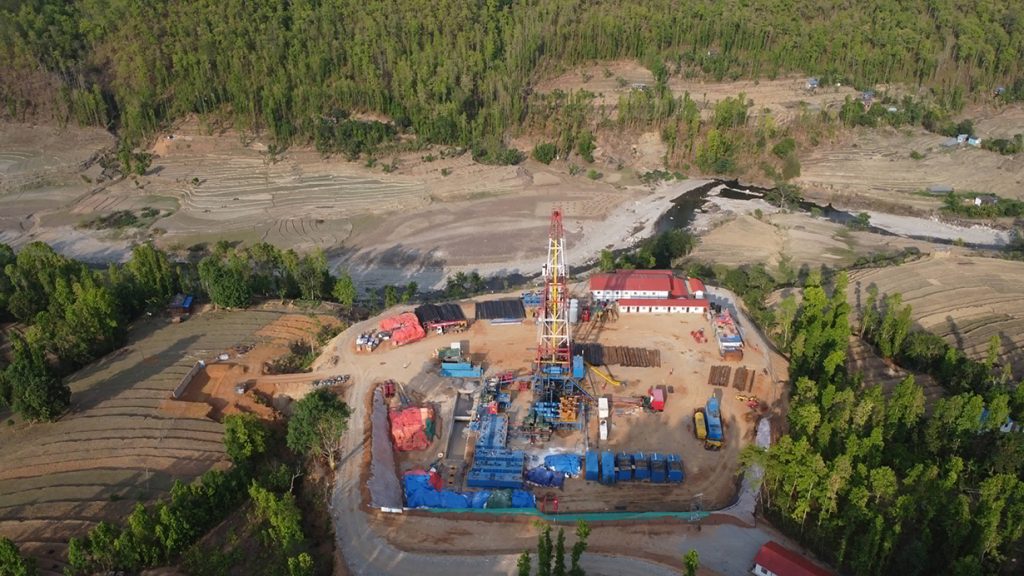

DAILEKH: Promising indications of a brighter future for Nepal are emerging from the Jaljale region of Dailekh.
The China Geological Survey (CGS) has submitted a preliminary report on petroleum and natural gas exploration in Dailekh to the Government of Nepal. The report reveals that the Jaljale area holds a vast reservoir of methane gas.
The first drilling operation, which began on Baisakh 28, 2078 (May 11, 2021), reached a depth of 4,013 meters. Testing of samples collected from this well confirmed a storage of 1.12 billion cubic meters of methane gas. This is the preliminary result from only one of four potential wells.
Initial estimates from the other three wells project a total gas reserve of approximately 43 billion cubic meters in the Jaljale area alone. This reserve has the potential to meet Nepal’s gas needs for nearly 50 years.
According to Dinesh Kumar Napit, Deputy Director General of the Department of Mines and Geology and head of the Petroleum Exploration Project, this work started after the 2019 MoU signed between Nepal and China.
“The Nepalese government has allocated 45 ropanis of government land in the Jaljale area for exploration and is conducting what is the deepest and most scientifically advanced exploration project to date,” Napit said.
He added that the currently available report is preliminary. More detailed tests on the gas quality, commercial viability, and economic benefits are ongoing. The Chinese company plans to submit a final report by December 2025.
The government aims to begin commercial production tests within the same month.For locals, the sight of gas or petroleum seeping from the earth has not been new. However, scientific confirmation efforts have been underway since 1979. Following the 2015 fuel crisis triggered by India’s blockade, the government was compelled to prioritize the development of domestic energy sources—bringing renewed attention to Dailekh.
The crisis created an opportunity. For the first time, Nepal seriously focused on identifying and extracting domestic energy resources. The petroleum exploration agreement between Nepal and China in 2019 was not only a technical advancement but also carried a strategic message.
Preliminary exploration confirmed that the continuously flowing gas in the Shirasthan and Navisthan areas of Dailekh is indeed petroleum gas. Technicians estimate that six to seven areas in Dailekh have petroleum and gas reserves.
Previous surveys also suggested the presence of petroleum or gas here. The next phase will determine the quantity and quality in detail. The current project is a fully Chinese grant-supported pilot project carried out with economic and technical assistance from CGS. The initial estimated cost was around Rs 2.5 billion. However, delays due to the COVID-19 pandemic and other reasons increased the cost.
The Department of Mines and Geology facilitated the project by acquiring land, extending roads and electricity, and coordinating administration, facing no obstacles from local representatives, administration, or other parties.
With the project showing promising results, the local residents and stakeholders are enthusiastic. Narendra Thapa, president of the Dailekh Chamber of Commerce and Industry, noted that the excavation, processing, supply chain, and technical workforce involvement would increase local employment and foster an industry-friendly environment.
This project is believed to be a historic opportunity for the country’s energy security. If the estimated reserves are confirmed, Nepal could gradually reduce dependence on fuel imports and move towards energy production and distribution from domestic sources.